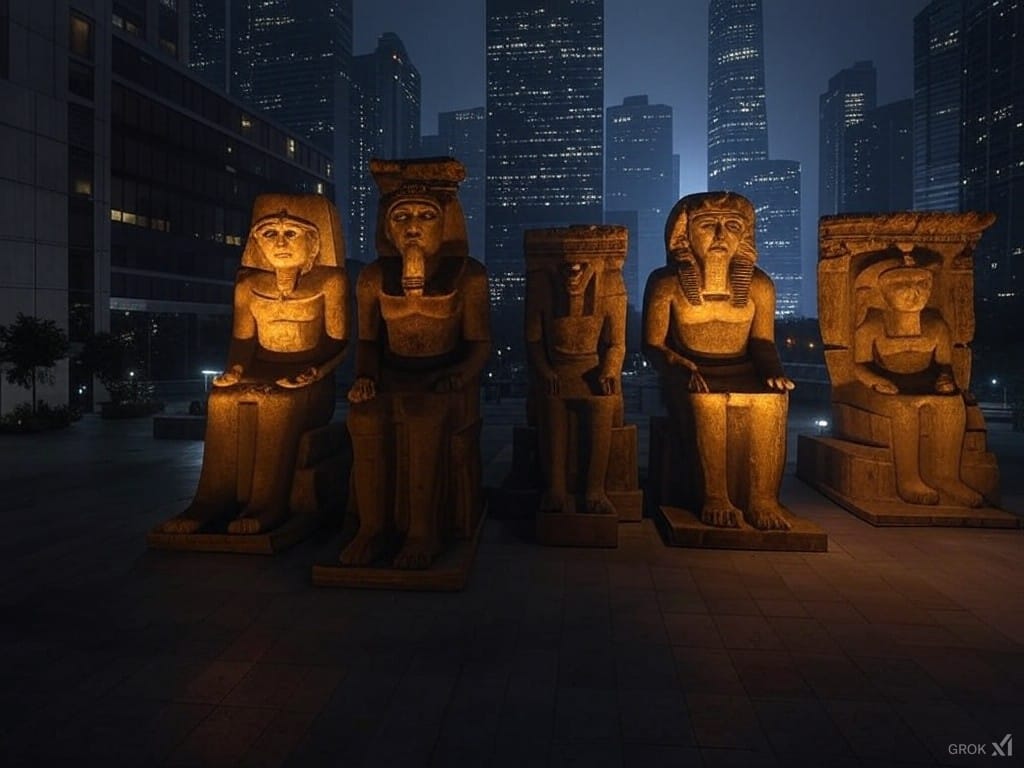Introduction
In an era where secularism seems to dominate, Jonathan Cahn, a noted Messianic Jewish pastor and author, presents a compelling message that suggests the spiritual landscape of today might be more aligned with ancient paganism than many realize. Cahn’s teachings delve into how the spiritual forces behind ancient idols, or “gods,” are resurfacing in modern Western culture, particularly in America. This article explores his interpretations, linking biblical prophecy with contemporary cultural phenomena.
The Three Principalities: Baal, Ashtoreth, and Molech
Baal – The God of Materialism and Apostasy
Baal, in biblical times, was not just a deity of fertility and prosperity but symbolized the seduction of materialism and apostasy. Cahn argues that America, once founded on Judeo-Christian principles, has increasingly turned away from these roots, embracing materialism and secularism, much like ancient Israel did with Baal.
Ashtoreth – The Goddess of Sexual Immorality
Ashtoreth, or Astarte, was associated with love, sexuality, and war. Cahn correlates the sexual revolution of the 1960s with the influence of this goddess, suggesting that the cultural shift towards sexual liberation signifies her return. This includes everything from mainstreaming pornography to the blurring of gender roles, which he interprets as a war against the divine order of creation.
Molech – The God of Child Sacrifice
Perhaps the most chilling of Cahn’s connections is between Molech, to whom children were historically sacrificed, and modern-day abortion. He sees the legalization of abortion as the contemporary equivalent of child sacrifice, arguing that it represents a profound moral descent akin to that of ancient Israel when they turned to Molech.
The Paradigm: Modern Leaders Echoing Ancient Archetypes
Cahn’s book “The Paradigm” posits that modern political and cultural leaders are unwittingly following scripts laid out by biblical figures like Ahab, Jezebel, and Jehu. He draws parallels between these ancient characters and recent American leaders, suggesting that these patterns are not coincidental but are manifestations of recurring spiritual battles.
Signs and Symbols in the Physical World
A striking aspect of Cahn’s teaching involves the physical manifestations of these spiritual influences. He points to events like the display of the Arch of Baal in New York City as symbolic of cultural defiance against God. Similarly, the destruction of the physical Temple of Baal coinciding with political shifts in America is seen as a sign of spiritual warfare playing out in the physical realm.
The Call to Spiritual Revival
Cahn’s message is not solely one of warning but also of hope. He calls for a revival, urging believers to adopt the spirit of Elijah, who stood against the prophets of Baal. This involves personal repentance, cultural reformation, and a return to biblical values as a counteraction to these ancient principalities.
Personal Testimony: A Modern Elijah
Cahn shares his personal conversion story, which he likens to the biblical narrative of spiritual battle. His encounter with death and subsequent commitment to God on a mountain dedicated to Satanic worship illustrates his belief in the ongoing spiritual warfare and the need for individual transformation.
Conclusion: The Urgency of Now
The urgency in Cahn’s message is palpable. He insists that we are living in times akin to those of the biblical prophets, where the choice between following God or the idols of our age is stark. He encourages a proactive stance in faith, advocating for a revival that starts within each believer’s heart.




